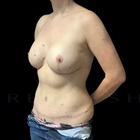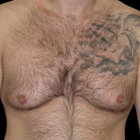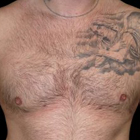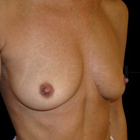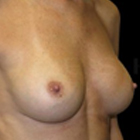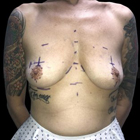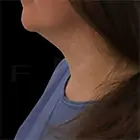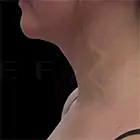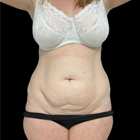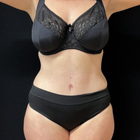Silicone implants have been used in breast remodelling procedures for over 50 years now, and they’ve been long seen as the industry standard. And if you consider what was being used before – anything from ivory, glass balls, ground rubber, ox cartilage, wool, and even formaldehyde sponge – it’s not surprising.
However, we’re aware that silicone breast augmentation might not be for everyone. Some people – a microscopic mount of people – suffer from an allergy to silicone, while others simply don’t like the idea of carrying something unnatural inside their body.
Luckily for them, there’s an alternative – and you’re probably carrying it around with you right now.
How does lipomodelling work?
Lipomodelling is a procedure that utilises fat from the client’s own body – usually the thigh, tummy or buttock area – via liposuction. The fat is then put through a process of refinement, and is then used to enhance and reshape the breasts by implanting it with a special tube called a cannula. Bottom line: it takes fat from a place where you don’t particularly need it, and places it where you do.
This means that there is zero chance of the body rejecting the implanted material – after all, you’ve already been carrying it about with you for a long time. Furthermore, the risk of an implant rupture or deflation (which can happen on a very rare basis) is also zero. The other main advantage is that as the implant material is delivered via the cannula, the length of incisions are much shorter than a standard implant procedure.
Am I a suitable candidate for lipomodelling?
If you’re physically healthy, over 18 years old, are not pregnant or breastfeeding, have breasts that have fully developed, do not have an infection and are fully aware of the procedures and effects of breast augmentation surgery, you’re a suitable candidate for lipomodelling.
As with any procedure involving liposuction, there will be swelling at the donor site which will take time to settle down. Bruising and discolouration of the skin can occur, but this is usually temporary. Both treated areas can remain numb for several weeks. And as the transplanted fat is a natural material, some of it may disappear over time and may need to be replaced.
If lipomodelling sounds like a procedure you’d be most comfortable with, and are looking for further information, please arrange a consultation with our specialist breast surgeon to discuss your options.





